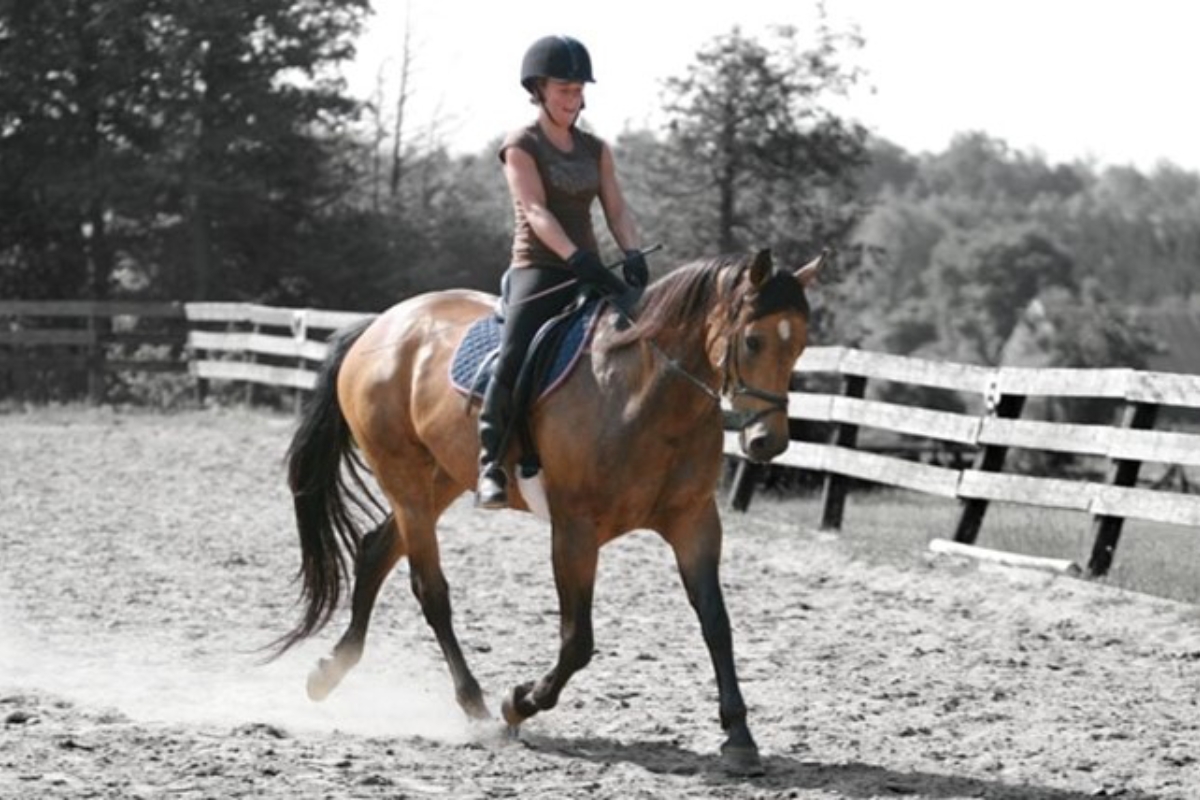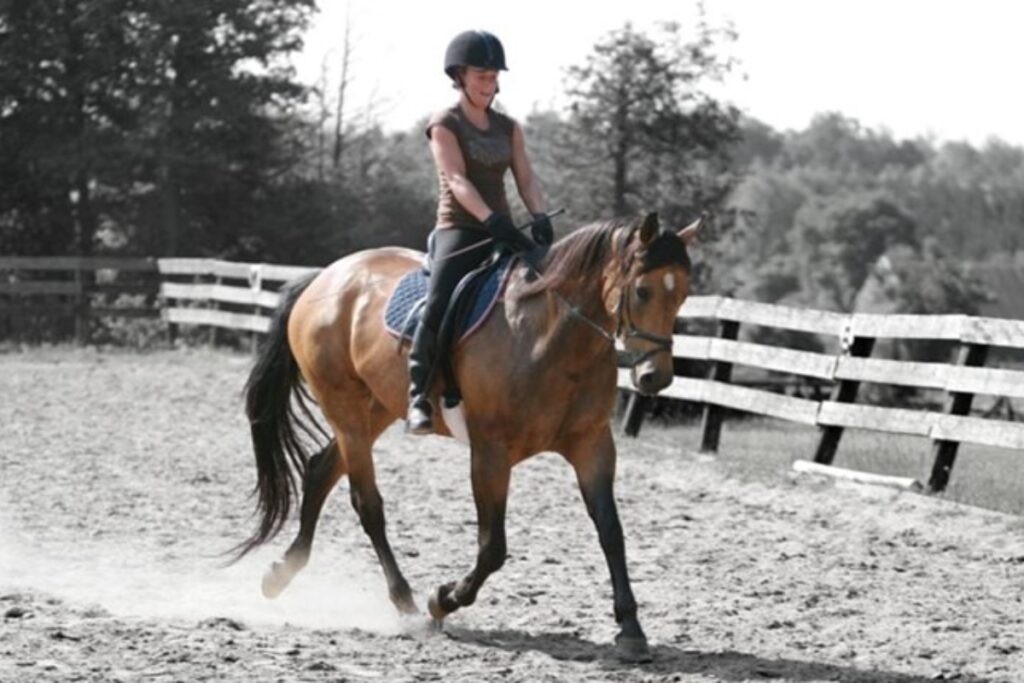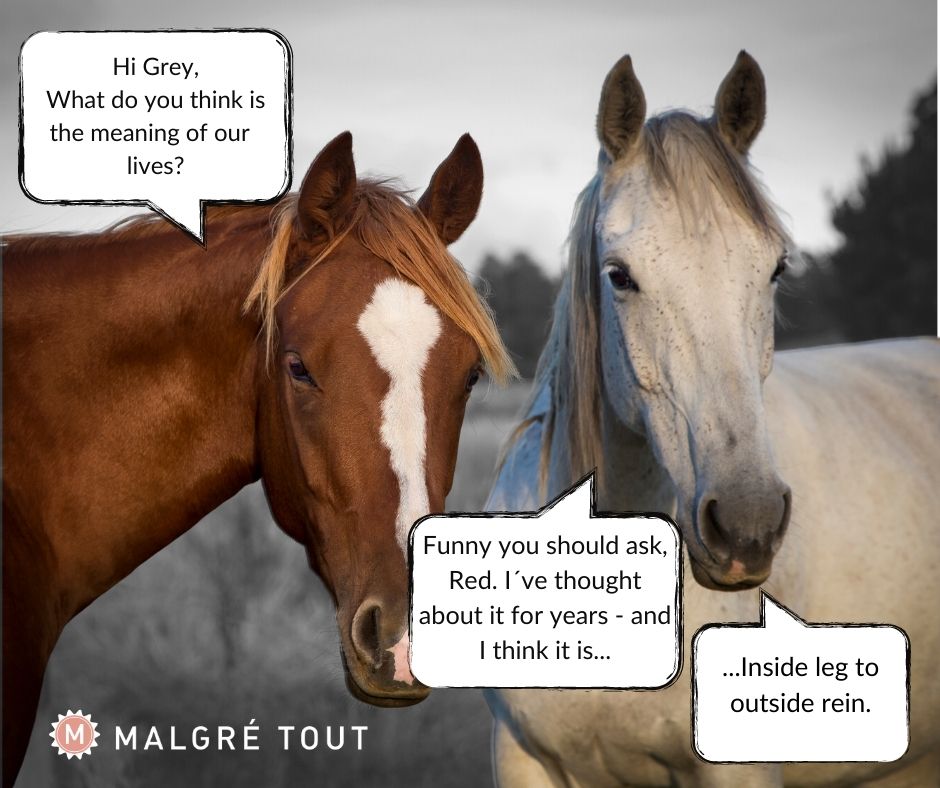Menu


"Inside leg to outside rein!" It's a bit like putting on an old, scratched gramophone record and hearing it get stuck. In the same place, over and over again. Just like riders when we sit on our horses, we tell ourselves: "Inside leg to outside rein" But what exactly is the idea behind the technique? Why is it so important? And what exactly do you have to do?
Riding is about balance and finding the right feeling. Getting as close to the horse's own rhythm as possible. We riders may have a hard time achieving because our human brain thinks based on the fact that we have two legs and not four. It is therefore quite normal for the human brain to think the following. When you want to turn something to the side that you have in front of you - for example a horse - you have to make a strong movement in the direction you want to move in. It can be to take a strong grip on the inner rein, just like turning the steering wheel on a bicycle or in a car. Of course, it is completely wrong to do so when sitting on a horse.
Because the horse has four legs, its coordination - the interaction between body and brain - does not work like that of humans. As it moves, it works largely diagonally. Therefore, as a rider you must ride with the inside leg to the outside rein.
In other words, working diagonally is completely natural for the horse. It's a reflex. We humans, however, must use our head thoroughly, to remind ourselves. And the more times we repeat it, the easier it becomes. It comes, so to speak, second to nature when we practice it enough. However, we will always need to think about it and remind ourselves of it, in order to maintain the ability to do so.
You may also like to read: Showjumper: The best way to jump water is by removing all pressure
A good exercise to train the ability to use inside leg to outside rein is to alternately get the horse to make side movements and go straight. For example, make a leg-yield from a corner and a halfway towards the center, after which you ride is a few meters straight. Then you do a leg-yield back towards the rail and again straight ahead when you hit the rail.

It is very basic knowledge that the outside rein helps to keep the horse in place and on the track. While the inside leg helps to guide the horse and round it off. Without the technique, the horse will fall into the vault when you turn it. It can best be compared to the fact that you also have to distribute your weight correctly when you sit on a bicycle and have to turn. Otherwise it will tip inwards to the side you are turning.
Upper body: Turn your upper body in the direction you want the horse to go. If you want to turn the horse, turn your upper body in that direction. Be sure to look in that direction with your head as well. The more you want to turn the horse, the more you also have to turn yourself in the upper body.
Inside seat bone: Be sure to emphasize the seat bone that is inside in relation to the way you want to ride. By doing so, you tell the horse how to distribute its own weight under you. That way, you prepare it to turn.
Inside leg: Use your inside leg to put pressure on the inside of the horse. The horse should give way a bit to this pressure.
Outside rein: Your outside rein should support and absorb the energy from the pressure your inner lower leg provides. If you have given the horse too much pressure with inside leg, you will probably also need to take a little more grip on the outside rein to get the horse to stay on track.
Outside Legs: Your outside leg is used to tell the horse that its hindquarters should follow. The horse must therefore be able to move in front of your outside leg in exactly the same way as it moves in front of your inside leg.
Bridle: Your inside rein is relatively passive, but should gently show the horse which way to go. This is done by putting a light pressure in the horse's mouth in that side.
Ashleen Lee, The Plaid Horse: The Madness Behind the Inside Leg to Outside Rein
Dressage Today, Instagram: To achieve the correct connection on the outside rein during a turn…
Horse Listening: “Inside Leg To Outside Rein” – The Cheat Sheet